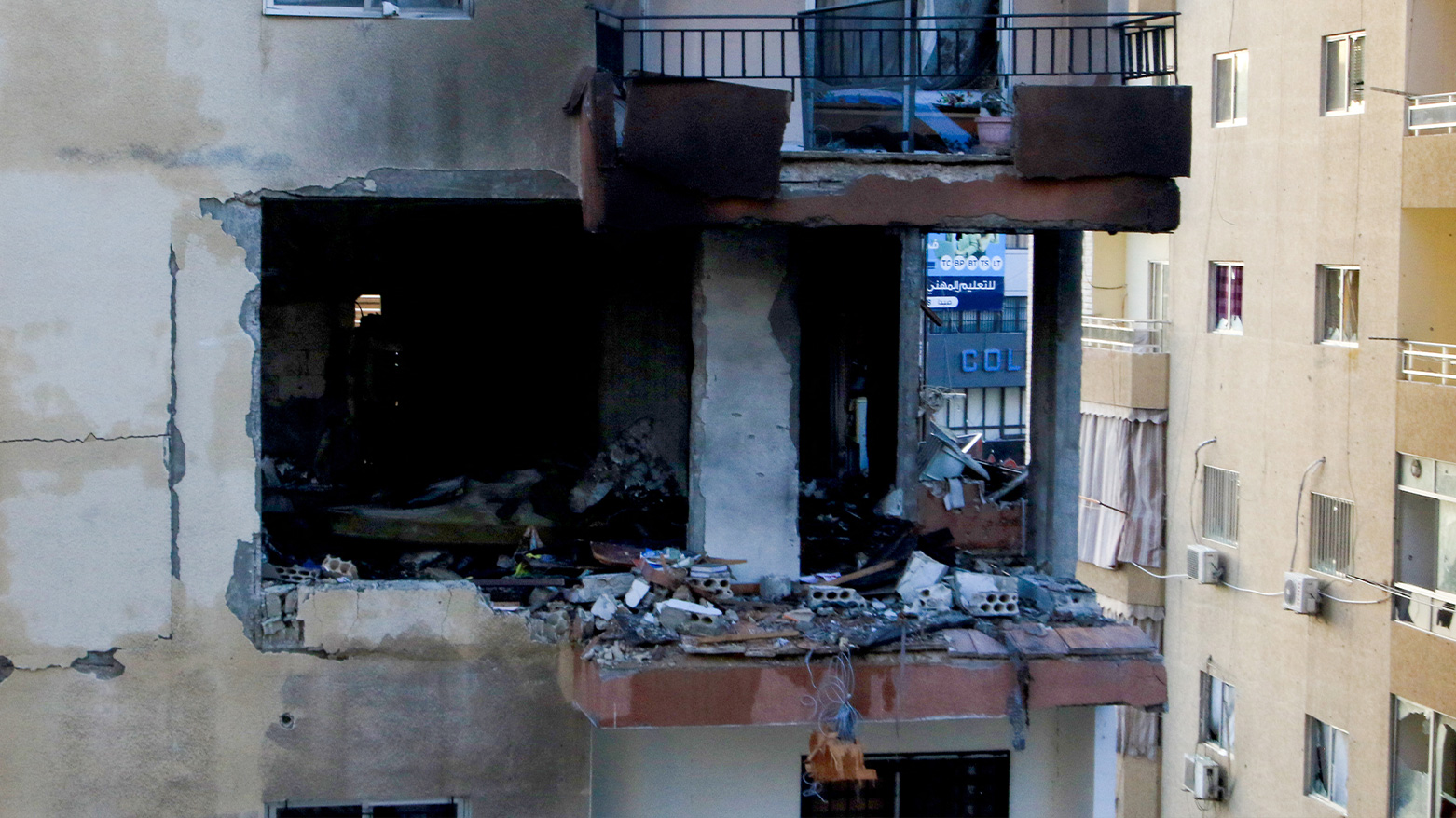Hamas Commander Killed in Israeli Airstrike
The targeted persons were identified as Hassan Farhat, also known by his nom de guerre Abu Yasser, his son, and his daughter.

By Kamaran Aziz
ERBIL (Kurdistan24) – A pre-dawn Israeli drone strike on Friday targeted a residential apartment in the southern Lebanese city of Saida (Sidon), killing three people, including a senior Hamas official and two of his children, in an incident that has heightened already soaring tensions along the Lebanon-Israel border.
According to a report by L'Orient Today, the strike occurred around 3 a.m. in the Dlaiaa neighborhood, near the city’s government serail. Two loud explosions were heard, and video footage captured by local media showed the targeted fourth-floor apartment engulfed in flames with its façade blown out.
The targeted persons were identified as Hassan Farhat, also known by his nom de guerre Abu Yasser, his son, and his daughter.
The Jerusalem Post later confirmed that the Israel Defense Forces (IDF) had conducted the strike, stating that Farhat served as the commander of Hamas's western sector in Lebanon. According to the Israeli military, Farhat was responsible for launching multiple rocket attacks during the current conflict, including the deadly strike in February that killed Israeli Staff-Sergeant Omer Sarah Benjo and wounded several others.
According to L'Orient Today, rescue teams recovered at least two bodies from the rubble, while the Israeli army did not immediately release a statement regarding the strike. The attack is the first Israeli strike in Saida since February 17, when Hamas commander Mohammad Chahine was killed in a drone strike also attributed to Israel.
According to The Jerusalem Post, Farhat had been orchestrating attacks against Israeli targets throughout the current conflict, including launching rockets into Safed. The IDF emphasized that his elimination was part of a broader strategy to dismantle Hamas’s presence in Lebanon and prevent further attacks on Israeli civilians.
On Tuesday, an Israeli airstrike in the southern suburbs of Beirut killed three individuals, including a Hezbollah operative reportedly involved in coordination efforts between Hezbollah and Hamas. Israeli Foreign Minister Gideon Saar reiterated on Thursday that while Israel seeks regional stability, it will not tolerate what he described as a growing “axis of terrorism” comprising Iran, Hezbollah, and Hamas.
As reported by L'Orient Today, Saar stated, “We will not allow terrorist activities from Lebanon against Israel and our civilians,” adding that the cooperation among regional militant groups has forced Israel to act preemptively.
Despite a ceasefire agreement reached on November 27, Israel has continued to launch airstrikes on various targets in southern and eastern Lebanon, as well as in Beirut’s southern suburbs. The Israeli military has also maintained several outposts in Lebanese territory after a partial withdrawal in February.
Defense Minister Israel Katz told The Jerusalem Post that five new IDF positions were established in Lebanese areas deemed “strategic,” and warned that extensive reconstruction would be required before displaced Lebanese civilians could return to many destroyed villages.
In a speech delivered on Saturday, Hezbollah Deputy Secretary-General Naim Qassem condemned ongoing Israeli aggression and called for a decisive response. “There is still room for a political and diplomatic solution,” he said, “but there is a limit to everything.”
Under the ceasefire arrangement, only the Lebanese Army and United Nations peacekeeping forces are authorized to operate south of the Litani River. Hezbollah, which suffered significant casualties during the 2006 war with Israel, is formally required to withdraw from this zone.
The death of Hassan Farhat and his children underscores the extent to which Lebanon has been drawn deeper into the Gaza war’s geopolitical fallout. As regional tensions rise and the line between resistance networks and state boundaries continues to blur, both sides appear to be bracing for further confrontations, with civilians once again caught in the crossfire.
